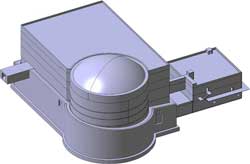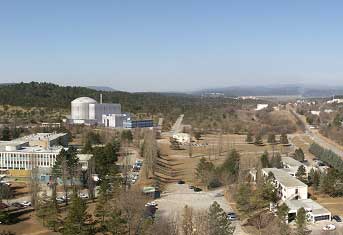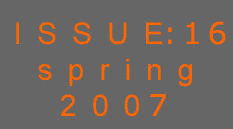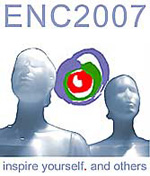
Word from the President

A major milestone for European nuclear research
and development
On March 19, the first stone of the new Jules Horowitz
research reactor was laid by French Industry Minister François
Loos in Cadarache, France.
The Jules Horowitz reactor (JHR) is designed
to be a highly versatile 100 MW thermal materials testing reactor.
Operation is planned to start up in 2014, at which time it will
progressively replace the Osiris reactor as well as a number of
other aging European research reactors.

In his speech during the stone laying ceremony,
Philippe Pradel, Director General of the CEA’s Nuclear Energy
Division stated that:
"The JHR will offer for a large part
of this century a high performance experimental capacity for studying
materials and fuel behaviour under irradiation, including:
This will meet public and industrial needs for generation
II, III, IV, with regards to the different reactor technologies
(PWR, BWR, HTR, GFR, SFR …):
-
Operation and lifetime management for existing reactors
-
Optimisation of generation III reactors
-
Fuel behaviour in incidental conditions
-
Innovative materiasl and fuel for generation IV reactors
As an important secondary objective, JHR will contribute
to radio-isotope production for medical applications by producing
25% of Europe’s needs. This is a major public health stake."
The construction costs (estimated at 500 M€)
will be met by a consortium of CEA (50%), Electricité de
France (20%), EU research institutes (20%) and Areva (10%). Today,
the participating research institutes are SCK-CEN in Belgium,
NRI in the Czech Republic, CIEMAT in Spain and VTT in Finland.
By the time this report goes to press, the EC is expected to have
joined the consortium too.

During the ceremony, I was asked to give a short
speech on behalf of the signatories and here it is:
After the famous 'Atoms for Peace'
address that was given by President Eisenhower in 1953, many countries
began pursuing the development of the peaceful applications of
nuclear energy by building or acquiring research reactors. Consequently,
most high-flux reactors now in operation in Europe are more than
45 years and are scheduled to be shutdown during the next decade.
This will leave Europe with a shortage of research reactors and
without even the essential tools required to carry out nuclear
physics research and to develop reactor technology - including
fuel and structural materials testing etc...
The applications of fission research
reactors are not limited to just generating nuclear fission power.
R&D on structural materials that can withstand the extreme
conditions inside fusion reactors such as ITER, innovative nuclear
fuel development and radioisotope production for medical and industrial
use all require irradiation sources that are provided by research
reactors - optimised to suit specific applications. Does Europe
want to continue play a leading role in nuclear research and development
as well as on the industrial scene? If the answer is yes, then
we need to develop new state-of-the-art research reactors.
Whatever the long-term role of nuclear
energy in the world energy mix is, nuclear power and its bi-products
will continue to be vitally important for generations to come.
The non-power applications of nuclear energy will most probably
remain techniques of choice in specific niche areas such as medical
diagnosis and therapy, and will certainly be developed in other
areas like water desalination or hydrogen production. Finally,
let us not forget that even where nuclear energy is being phased
out – a scenario that is favoured by some countries - the
legacy of today’s nuclear activities has to be managed optimally
for decades to come. Let us not forget either that radiation is
a natural phenomenon and has been present all around us since
the beginning of time. Whatever the future of nuclear power might
be, we need to retain and develop nuclear knowledge and expertise.
Consequently, we need new nuclear scientists and engineers to
move things forward.
Training and educating this future
generation of nuclear scientists and engineers requires a special
infrastructure that is adapted to meet future needs. The Jules
Horowitz reactor clearly provides an extremely useful tool in
promoting technological development and supporting the achieving
of these educational objectives.
Today, we sign the consortium agreement
for the construction of the Jules Horowitz reactor, which is named
after one of your greatest nuclear scientists. Between now and
when first criticality is reached, various supporting research
and qualification programmes will have to be performed with regards
to fuel, materials etc... I do not doubt that the genealogical
roots of the Jules Horowitz reactor will lead to existing European
research reactors being ready and willing to implement these supporting
programmes.
In addition to the French initiators
of and partners in this project - CEA, EDF, AREVA - I also see
here today consortium members from Spain, Finland, the Czech Republic,
Belgium and, last but not least, the European Commission. This
is proof of the new scientific culture that exists today whereby
scientific advances are achieved through international collaboration
that benefits mankind in general, rather than simply serving local
interests. As such, the signing of this agreement today is a foretaste
of similar initiatives to come in the future.
The Jules Horowitz reactor will meet
many of the future research needs in the field of thermal reactors.
We know that the road to even more sustainable nuclear energy
will involve the use of fast neutrons. There undoubtedly is a
need for a major experimental European fast spectrum neutron reactor.
In this context, a significant European effort is already underway
and we look forward to seeing the advances that it will bring.
Similarly, it would be reasonable to assume that just such an
effort will help ensure the long-term availability of radioisotopes
for medical and industrial use by means of a specially-designed
and dedicated reactor.
France, and in particular the CEA,
has well understood that in today's European context a project
like the Jules Horowitz reactor has to be a European venture involving
prominent European partners. I know that I express the opinion
of all partners present here today when I thank you, most sincerely,
for your vision and your proposal to be part of this challenging
venture to which all of us are committed and which all of us look
forward to seeing bear fruit. I also want to congratulate you
for your organisation of this very nice ceremony. The 19th of
March 2007 will certainly be remembered as a major milestone for
European nuclear research and development.
Frank Deconinck
President of the ENS
|






